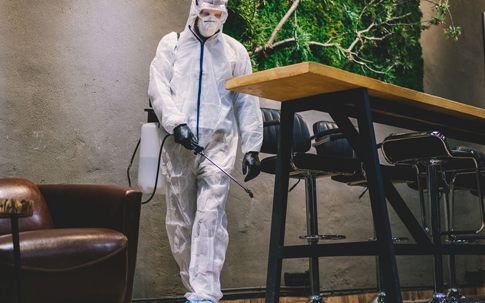Sachin | 28,Jun 2023
In the fast-paced world of restaurants, maintaining a spotless reputation is crucial. One unexpected pest sighting can send shivers down the spines of your customers and health inspectors alike. While occasional pest encounters are a reality, proactive pest control is essential for restaurants to ensure a safe and enjoyable dining experience for everyone. This blog explores the importance of pest control in restaurants, common restaurant pests, and effective strategies to keep them at bay. Why Pest Control Matters in Restaurants: Beyond the obvious ick factor, pests pose a significant health risk in restaurants. They can contaminate food preparation surfaces, carry harmful bacteria, and trigger allergies. A single pest sighting can lead to negative online reviews, lost revenue, and even health department citations. Investing in a comprehensive pest control plan demonstrates your commitment to food safety and customer well-being. Common Restaurant Pest Invaders: Rodents: Mice and rats are notorious for spreading diseases and causing property damage. They're attracted to food scraps, crumbs, and moisture build-up, making restaurants a prime target. Cockroaches: These resilient insects can contaminate food with bacteria and trigger allergies. They thrive in warm, humid environments and are particularly adept at hiding in cracks and crevices. Flies: Fruit flies, houseflies, and drain flies are a nuisance to both customers and staff. They can spread bacteria by landing on food surfaces and breed in areas with decaying organic matter. Stored Product Pests: Weevils, moths, and beetles can infest stored grains, cereals, and dried goods. Their presence not only damages food but can also contaminate it with harmful toxins. Building a Strong Defense: Effective Pest Control Strategies Partnership with a Professional Pest Control Company: Regular inspections and preventative treatments by a licensed pest control company are crucial. Professionals can identify potential entry points, recommend targeted treatments, and provide ongoing monitoring. Sanitation is Key: Maintain a clean and hygienic environment by implementing a thorough cleaning and sanitation routine. This includes wiping down surfaces regularly, properly storing food, and promptly disposing of garbage. Seal Up Entry Points: Inspect your restaurant for cracks, gaps, and holes around pipes, windows, and doors. Seal these openings to prevent pests from entering in the first place. Proper Food Storage: Store food in airtight containers, off the floor, and away from walls. Rotate stock regularly to prevent spoilage, which attracts pests. Eliminate Moisture Sources: Fix leaky pipes, address condensation issues, and promptly clean up spills. Moisture build-up creates a breeding ground for many pests. Employee Training:Educate your staff on the importance of pest control and proper hygiene practices. Train them to identify common pests and report any sightings immediately. The Benefits of Proactive Pest Control Protects Your Reputation: A proactive approach to pest control minimizes the risk of a public health scare and ensures a positive customer experience. Reduces Costs: Preventing pest infestations is significantly less expensive than dealing with a full-blown problem that requires extensive treatments and potential property damage. Ensures Food Safety: By maintaining a pest-free environment, you safeguard your food from contamination and protect your customers from potential health risks. Promotes a Safe Work Environment: A pest-free workplace is not only more pleasant for your staff but also minimizes the risk of pest-related illnesses. Conclusion Pest control for restaurants is not a one-time fix; it's an ongoing process. By partnering with a professional pest control company, implementing preventative measures, and maintaining a clean and hygienic environment, you can effectively keep those unwanted guests at bay. This not only protects your reputation and investment but also ensures a safe and enjoyable dining experience for your customers.
 General Pest Control
General Pest Control  Termite Control
Termite Control
 Fumigation Service
Fumigation Service General Pest Control
General Pest Control  Termite Control
Termite Control
 Fumigation Service
Fumigation Service General Pest Control
General Pest Control  Termite Control
Termite Control
 Fumigation Service
Fumigation Service
